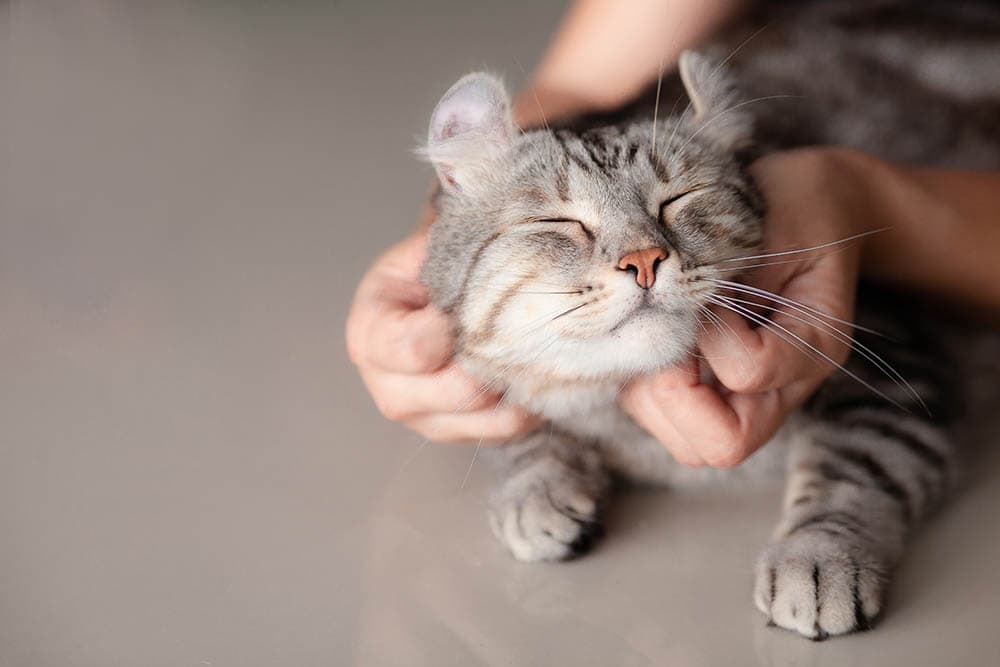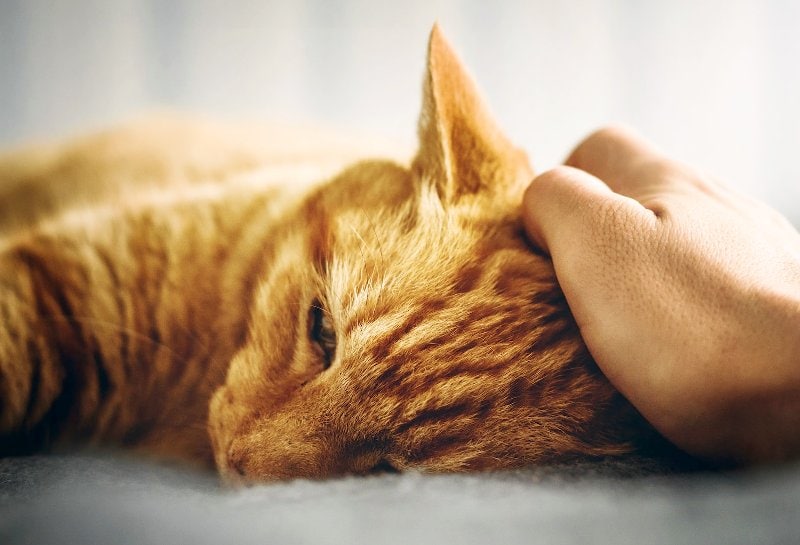How Many Teeth Do Cats Have? Vet Approved Feline Anatomy Facts & FAQs

Updated on
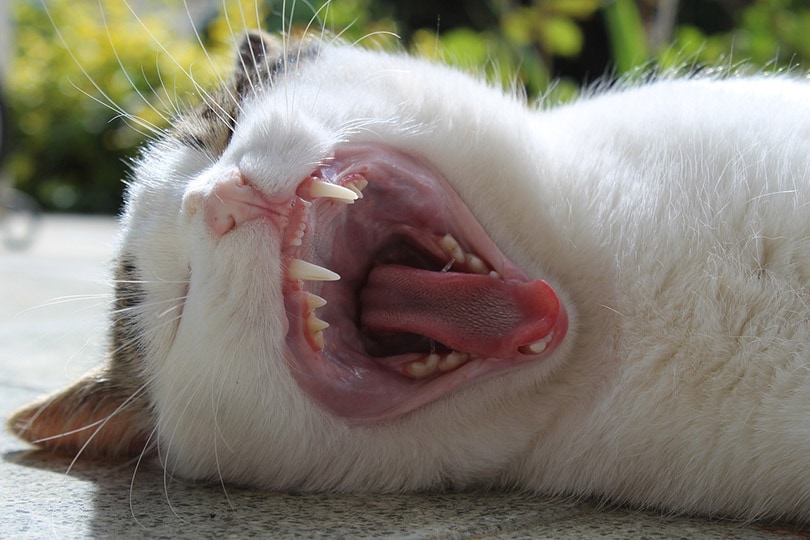
Cats are enigmatic animals that disappear for long periods of time, and you may never find out where they have been! Independent, strategic, and resourceful, your family cat may be sourcing food from plenty of places in your neighborhood. It is apparently not uncommon that a feline has multiple homes. Therefore, don’t be surprised if you discover that your cat has a couple of moms and dads and that the recurring smell of sardines they bring in the house is from their last meal at the house up the street.
People seem to never catch many sights of their cats’ teeth, even though they are extremely important for their hunting excursions, playing, and general health. So, the question is, how many teeth do they actually have?
Your cute kitty has 30 teeth by the time they reach cat adulthood. A lot of folks are surprised when they hear this, but when do you really get a good solid look at your cat’s teeth? We love our fluffy felines but let’s face it, they don’t like kissing or playing with chew toys as much as dogs do, so unless you have a particularly friendly cat, you may have never had a peek at their fangs.
Do cats have baby teeth?
An important estimate of a cat’s age is via inspection of their teeth. Similar to human babies, cats are born without any visible teeth. Usually, the baby teeth start erupting at around 3 weeks of age and are replaced with their permanent teeth by the time the cat reaches 6-7 months of age. Milk teeth are also called deciduous, which start appearing through a kitten’s gums when they are 3-4 weeks old and there are 26 of them. The canines, or vampire-like teeth, are the ones that erupt second after the mini, baby incisors, which are the teeth at the front of the mouth.
The whole process is called teething. The buds of the adult teeth begin to spurt up through the gums beneath the milk teeth. It is absolutely as painful as it sounds, and your kitty will inform you of this no doubt! Tenderness and discomfort are usually accompanied by drooling and an unusual breath smell. Hopefully, you will find milk teeth shells around the house, so keep an eye out and just put them in the bin or keep them in a kitty memory box. There must be plenty of soft chewy objects available at this time because the urge to bite is strong.
The same pattern of growth takes place for the adult teeth as for the baby ones, starting with incisors, then canines, and finally premolars and molars. At 24-28 weeks, your kitten should have their adult teeth and you will probably know this as you will feel them during play! Unfortunately, your cuddly kitty is not exactly like a shark and cannot regrow their teeth. So, watch their teeth because if they lose one, it is gone for good!
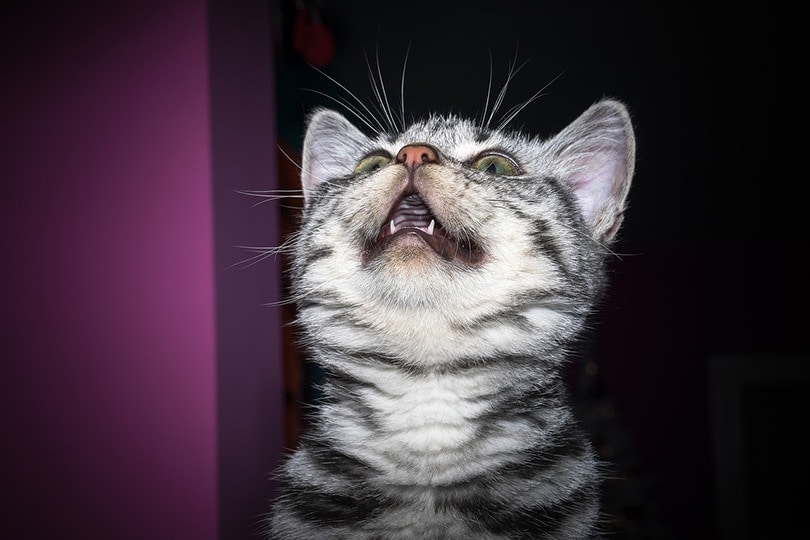
Are cats obligate carnivores?
An obligate carnivore is exactly what it says, it’s an animal that is obligated to eat meat. If you didn’t think your cat needed all that chicken, then all you must do is watch a lion tear flesh and remember your cat is just the same. A cat cannot receive all their nutritional requirements from a vegetable or a vegan diet, and scientific debate is still underway on the possible health implications and risks associated with such diets in cats. The veterinary profession strongly discourages feeding cats anything other than animal protein-based food, which they need to thrive. For any changes in your cat’s diet, it is crucial to consult with a vet or feline nutritionist to make sure your cat is getting all the nutrients they need.
The first clue that your fluffy friend is a true carnivore is their teeth, which are a powerful weapon. The small incisors at the mouth entry are intended to catch and grip prey and the four very pointy canine teeth essentially rip flesh. There are also molars specifically named “carnassial” which are like razors and designed to tear. If that wasn’t evidenced enough, a cat’s digestive system is the direct opposite of a cow. In fact, a feline has the shortest digestive tract ratio in the mammal kingdom, which implies fewer bacteria to digest vegetable matter.
Are cats’ teeth like humans?
The correct answer to whether cats’ teeth are similar to humans is both yes and no. The function of teeth for both is identical, which is to prepare food for ingestion and absorption. However, there are some vast differences. Humans normally have 32 teeth as adults and about 20 milk teeth. Just for comparison purposes, a puppy dog has 28 baby teeth and then 42 when they are full grown. As omnivores, humans can eat anything they want from pure plant-based foods to other animals. Hence, a human’s teeth are relatively less fang-like and we tend to chew our food for longer. Cats, with their obligation to consume meat, have sharp incisors and canines to ensure they can grip and kill their prey, and then fill their stomachs with flesh. A feline also uses their teeth for grooming and keeping themselves and their kittens impeccably clean.
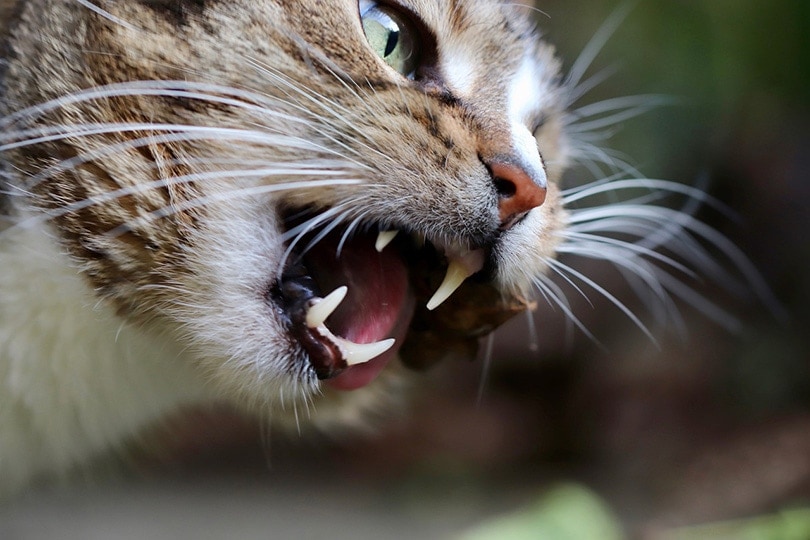
Do cats’ teeth need to be brushed?
As funny as it may sound (and look!), brushing your feline friend’s teeth is a very good idea. The best time to start getting them used to the idea of brushing is when they are a few months old. Like a little toddler, your kitten may be in a bit of distress during teething, as well as some pain, so in some cases, it may be best to leave them in peace until they have a complete set of adult fangs. However, you can gradually get them used to you checking their mouth or even gently rubbing their gum, and offering some tasty feline-specific toothpaste.
The easiest way to get started is to get your claws on a kitty dental kit with a toothbrush and paste. These kits have instructions on how to clean your cats’ teeth and the key is to go slow and gradual. It may take months before your cat is okay with you brushing their teeth, and that is okay. However, if it is too stressful for them, mouthwashes or dental chews can be considered. Keep in mind that they will not be as effective and are not considered an alternative to brushing. If your feline is experiencing any dental issues, contact your vet as soon as possible, as they will be painful.
What diet is good for cats’ dental health?
A cat should have a wide selection of meat and fish in some good-quality wet and dry food. Tinned fish, like herring or sardines, when prepared properly, as well as cooked chicken, are welcome additions. A cat’s diet is a bit simpler than a dog’s because they are obligate carnivores. Luckily, your cats’ diet plan is naturally low sugar if not sugar-free as these meat-eaters require a high-protein, low-carbohydrate diet. Regular dental checkups with your vet are important to prevent and detect any dental issues.
See Also:
- How to Tell How Old a Cat Is: 4 Vet-Approved Steps
- Why Does My Cat Yawn So Much? Should I Worry? (Vet Answer)
Featured Image Credit: Sergio Huainigg, Pixabay



